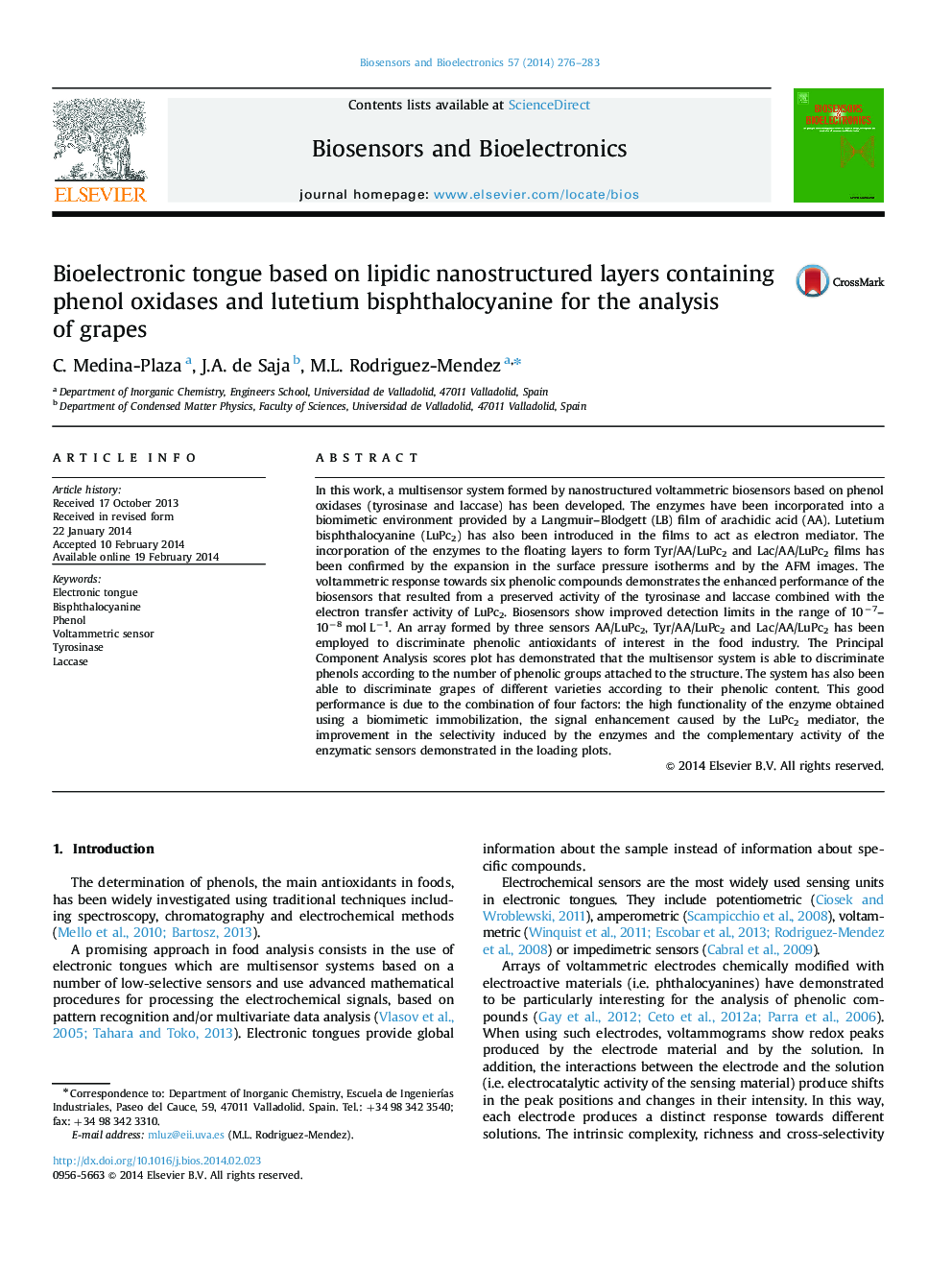| Article ID | Journal | Published Year | Pages | File Type |
|---|---|---|---|---|
| 7233608 | Biosensors and Bioelectronics | 2014 | 8 Pages |
Abstract
In this work, a multisensor system formed by nanostructured voltammetric biosensors based on phenol oxidases (tyrosinase and laccase) has been developed. The enzymes have been incorporated into a biomimetic environment provided by a Langmuir-Blodgett (LB) film of arachidic acid (AA). Lutetium bisphthalocyanine (LuPc2) has also been introduced in the films to act as electron mediator. The incorporation of the enzymes to the floating layers to form Tyr/AA/LuPc2 and Lac/AA/LuPc2 films has been confirmed by the expansion in the surface pressure isotherms and by the AFM images. The voltammetric response towards six phenolic compounds demonstrates the enhanced performance of the biosensors that resulted from a preserved activity of the tyrosinase and laccase combined with the electron transfer activity of LuPc2. Biosensors show improved detection limits in the range of 10â7-10â8 mol Lâ1. An array formed by three sensors AA/LuPc2, Tyr/AA/LuPc2 and Lac/AA/LuPc2 has been employed to discriminate phenolic antioxidants of interest in the food industry. The Principal Component Analysis scores plot has demonstrated that the multisensor system is able to discriminate phenols according to the number of phenolic groups attached to the structure. The system has also been able to discriminate grapes of different varieties according to their phenolic content. This good performance is due to the combination of four factors: the high functionality of the enzyme obtained using a biomimetic immobilization, the signal enhancement caused by the LuPc2 mediator, the improvement in the selectivity induced by the enzymes and the complementary activity of the enzymatic sensors demonstrated in the loading plots.
Related Topics
Physical Sciences and Engineering
Chemistry
Analytical Chemistry
Authors
C. Medina-Plaza, J.A. de Saja, M.L. Rodriguez-Mendez,
